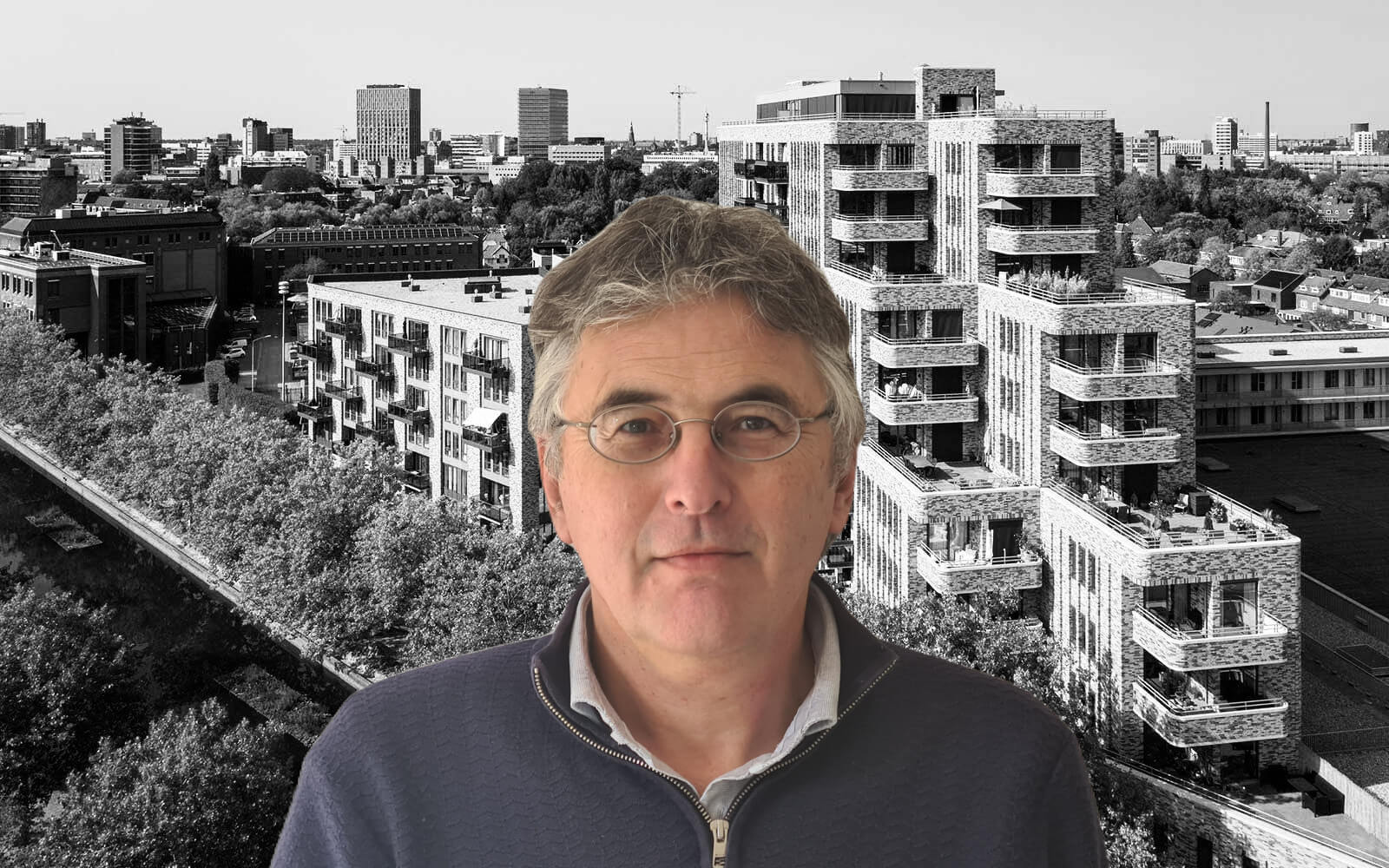
I am an avid twitterer. My twitter handle @eugenefranken is rapidly approaching 10K followers and generates – as we speak – 500,000+ views per month.
About two years ago, I took my dormant Twitter account out of the mothballs and started a mini-blog with daily impromptu thoughts. After all, I have a wide range of interests coupled with a ‘burden of opinion’. For that reason alone it seemed a good idea to narrow down the subject a bit. By staying close to my profession. Consequently, my tweets concern the temperature, the future and the current state of affairs in architecture, urban planning, nature and the countryside. If at all possible from the perspective of Eindhoven here in The Netherlands. The epicenter, the prime meridian.
What’s so interesting about that? Well, for starters, each tweet is a tiny piece of research, which teaches you a lot as you constantly have to formulate a concise idea and combine it with images with some set limitations. Just as there are the iconic limitations that define Twitter. Because it has to fit within the famous 280 characters with a maximum of four images, and which – blissfully archaic! – not one iota can be edited afterwards. No room for any afterthoughts. This rigid structure makes Twitter certainly not the easiest, nor the largest social medium, although perhaps the most important pluralistic opinion platform. Which, in my opinion, still has a long history ahead of it.
To make things a tad more exciting, my tweets have several self-imposed rules. The text is short and layered, and provokes several different meanings. Only one image is allowed per piece. The images independently tell a story and have a special architectural quality. To my mind anyway. And a couple more rules like that. You can discover these yourself if you follow me 🙂
Pats on the back
Incidentally, once the tweet goes live, that’s when the fun really begins. That is, if you have enough followers. Without them, everything vanishes into thin air. Even truly excellent content is not rewarded then. Unless you pay for it. But after a few thousand followers you start gaining ‘reach’. You get ‘friends’, fans you might say, and pats on the back. Good for the ego. Your thoughts are picked up and spread far and wide. The most interesting thing about this is that you get feedback. You wind up in a conversation. A remarkably high-quality kind of crowd peer review emerges, with other angles than you yourself had thought up, critical commentary, supplementary info and so on. Permanent education, as it were. With the emphasis on permanent. Because it goes on and on. You’re only as good as your last tweet. You have to think up something new, each and every day.
A tweet has a very brief lifespan. After just a few hours, the incomprehensible Twitter algorithm loses interest. Fortunately, architecture is a rich language. An inexhaustible source of imagination and creative ideas. This brings us to the most important point. By appearing in timelines in this manner, you evidently create awareness, understanding and as such, support for the engineering of spatiality that is not so obvious and perhaps taken for granted.
Does Twitter help with innovation?
That’s all well and good, but of course the word innovation ought to be mentioned in the context of these columns. Does Twitter help with innovations in spatial planning issues? – Have you got a moment? It’s all pretty complicated. Definitely, I think. On the one hand it does, because Twitter is not just full of ideas. Twitter is very political. And that just turns out to be the most important key feature of almost all spatial processes. Take regular urban planning for example, or try to define the housing shortage in scientific terms without a political framework. Impossible. Formulating a problem in the right way is half the solution. And that is what the many spatial specialists among the three million daily Dutch Twitter users are doing on a daily basis.
On the other hand, Twitter is also the infamous sounding board where like-minded groups tend to seek each other out. At the same time, professional parties, especially those active in the spatial domain, tend to use it merely as part of their PR machine. Another large group, in turn, is primarily concerned with framing. All of which are, of course, more beneficial to the status quo.
I myself, however, have the impression that I manage to avoid that #innovation.
About this column:
In a weekly column, alternately written by Eveline van Zeeland, Eugene Franken, Helen Kardan, Katleen Gabriels, Bert Overlack, Weijma, Bernd Maier-Leppla and Colinda de Beer, Innovation Origins tries to find out what the future will look like. These columnists, occasionally supplemented by guest bloggers, are all working on solutions in their own way on the problems of our time. So that tomorrow will be good Here are all the previous articles.

